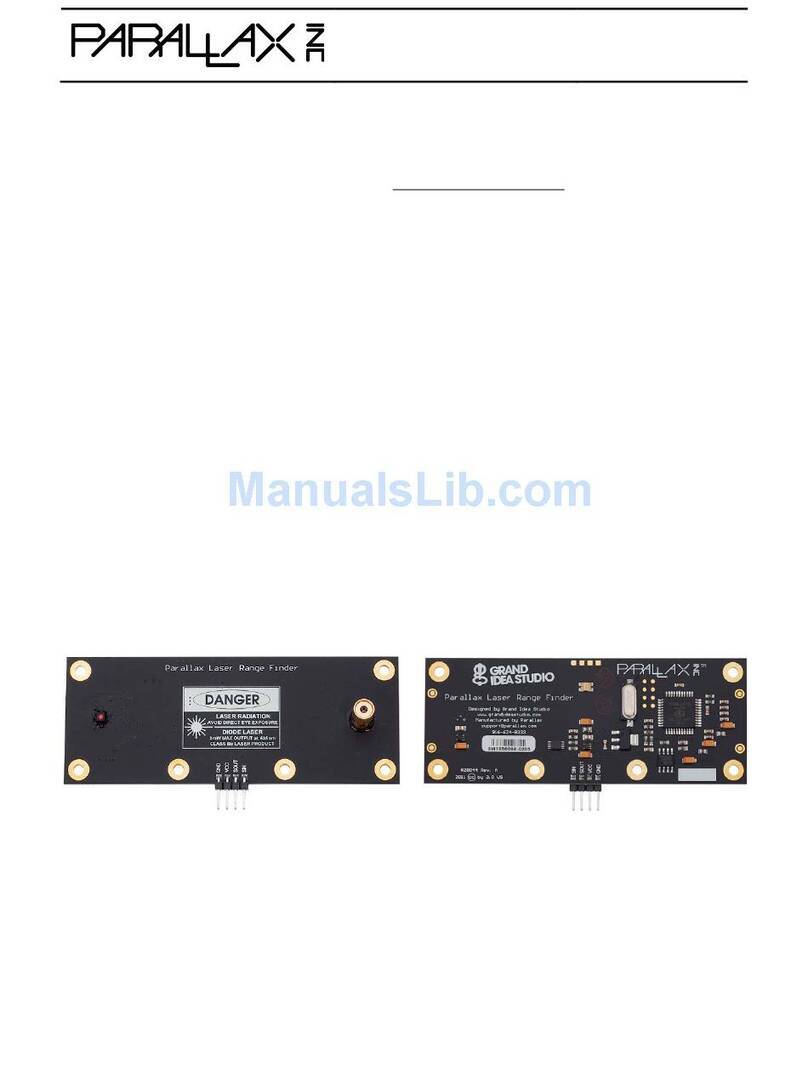
by the host and will set its baud rate to match that of the host. Supported baud rates include 300, 600,
1200, 2400, 4800, 9600, 19200, 38400, 57600, and 115200.
When the LRF is ready to receive commands, it will send a “:” to the host. The LRF waits in an idle state
until it receives a valid command, at which time it performs the command and returns command-specific
data (if any). The LRF will return a “?” upon receiving an invalid command.
The camera system used in the LRF Module has automatic white balance, automatic exposure, and
automatic gain control enabled by default, and will automatically adjust its image to account for sudden
changes in lighting conditions. However, the LRF works best in a controlled environment, such as indoors
with minimal changes in brightness across the frame. The LRF is also less reliable when the laser is
shining onto a bright object (for example, a white piece of paper), since the background subtraction done
during image processing could potentially “subtract” the bright laser from the already bright frame. Giving
the camera time for its automatic white balance and automatic exposure to settle helps a bit to make the
laser spot stand out. Using a red filter over the camera will also help the red laser spot become more
visible to the camera in certain situations. See the “E” command in the Command Set section below, and
Range and Accuracy, page 8, for more details.
Status Indicator
A visual indication of the LRF Module’s operating state is given with the on-board LED (Light-Emitting
Diode). The LED is located on the back side of the LRF near the center of the board. The LED denotes
four states of the Module:
1. Green: Idle state. Waiting for a valid command to be sent by the host.
2. Red: Active state. For example, performing a range calculation or capturing an image with the
camera.
3. Orange (Solid): Baud rate detection state. The LRF is waiting for a “U” character to be sent by
the host in order to automatically set the communications baud rate. Occurs on LRF power-up
only. See, Usage, page 2, for more details.
4. Orange (Blinking): Error state. The LRF has malfunctioned. A message identifying the failed
operation will be transmitted on the SOUT (Serial Out) pin. See Error Modes, page 9, for
more details.
If the LED is OFF, the LRF may not be receiving power.
Command Set
All commands are single-byte, ASCII printable values and are not case-sensitive (upper case and lower
case will both work). The basic and advanced command sets are described below.
Basic Commands
R Single range measurement (returns a 4-digit decimal value in millimeters)
B Single range measurement (returns a 4-byte binary value in millimeters)
L Repeated range measurement (any subsequent byte will stop the loop)
E Adjust camera for current lighting conditions
S Reset camera to initial settings
V Print version information
H Print list of available commands
Copyright © Parallax Inc. Parallax Laser Range Finder (#28044) v1.0 9/16/2011 Page 3 of 24




























